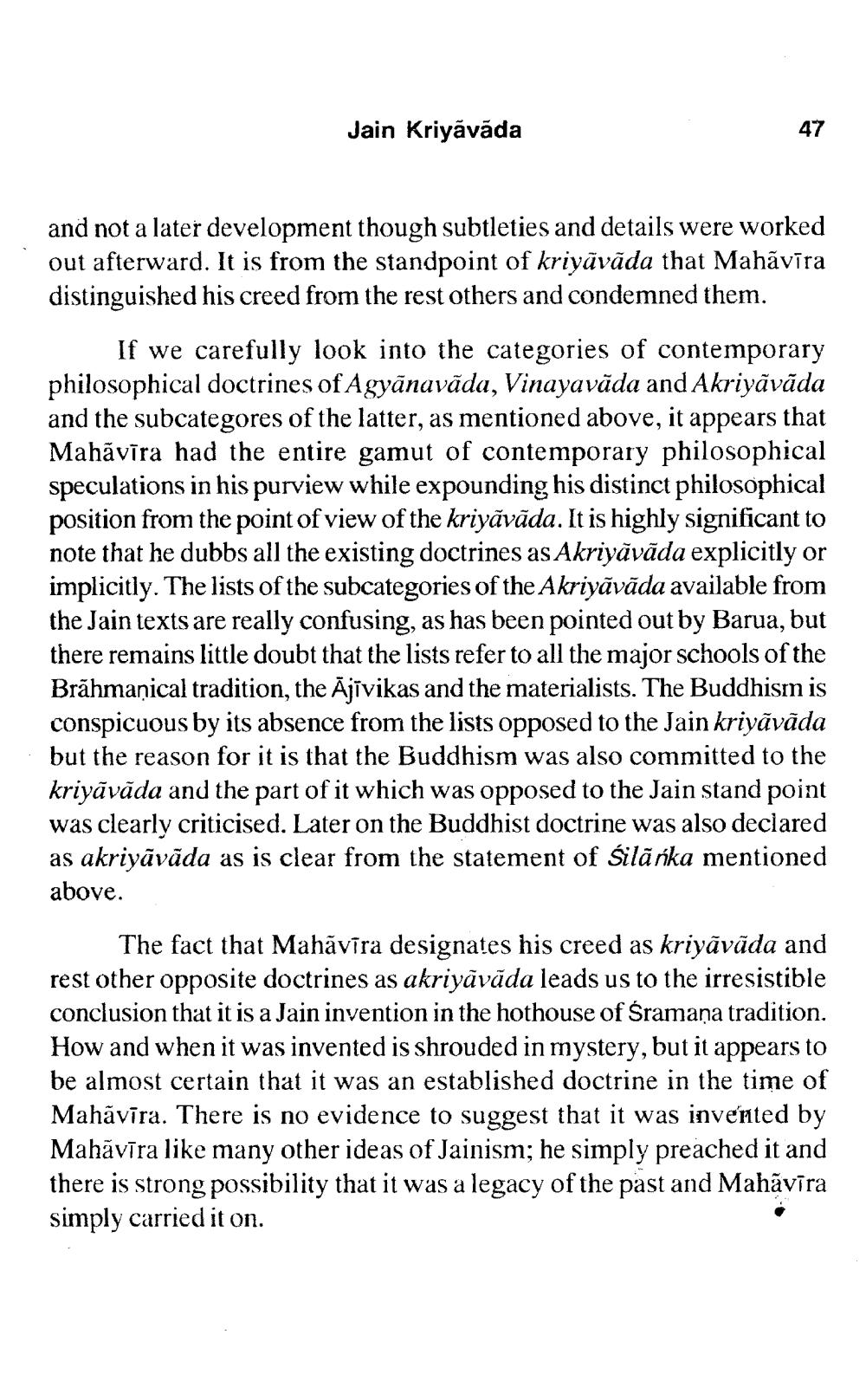________________
Jain Kriyavāda
and not a later development though subtleties and details were worked out afterward. It is from the standpoint of kriyāvāda that Mahāvīra distinguished his creed from the rest others and condemned them.
If we carefully look into the categories of contemporary philosophical doctrines of Agyānavāda, Vinayavāda and Akriyavāda and the subcategores of the latter, as mentioned above, it appears that Mahavira had the entire gamut of contemporary philosophical speculations in his purview while expounding his distinct philosophical position from the point of view of the kriyāvāda. It is highly significant to note that he dubbs all the existing doctrines as Akriyāvāda explicitly or implicitly. The lists of the subcategories of the Akriyāvāda available from the Jain texts are really confusing, as has been pointed out by Barua, but there remains little doubt that the lists refer to all the major schools of the Brāhmaṇical tradition, the Ājivikas and the materialists. The Buddhism is conspicuous by its absence from the lists opposed to the Jain kriyāvāda but the reason for it is that the Buddhism was also committed to the kriyāvāda and the part of it which was opposed to the Jain stand point was clearly criticised. Later on the Buddhist doctrine was also declared as akriyāvāda as is clear from the statement of silāńka mentioned above.
The fact that Mahāvīra designates his creed as kriyāvāda and rest other opposite doctrines as akriyāvāda leads us to the irresistible conclusion that it is a Jain invention in the hothouse of śramaņa tradition. How and when it was invented is shrouded in mystery, but it appears to be almost certain that it was an established doctrine in the time of Mahāvīra. There is no evidence to suggest that it was invented by Mahāvīra like many other ideas of Jainism; he simply preached it and there is strong possibility that it was a legacy of the past and Mahāvīra simply carried it on.




